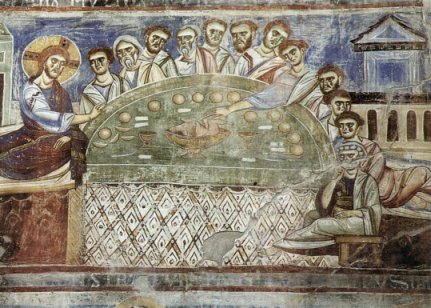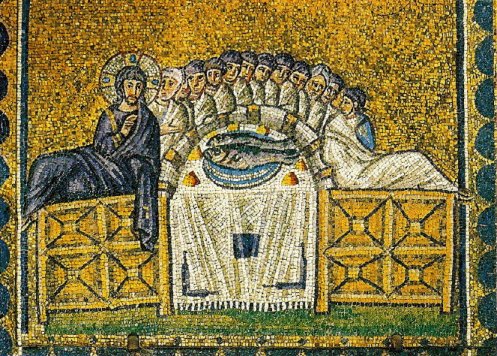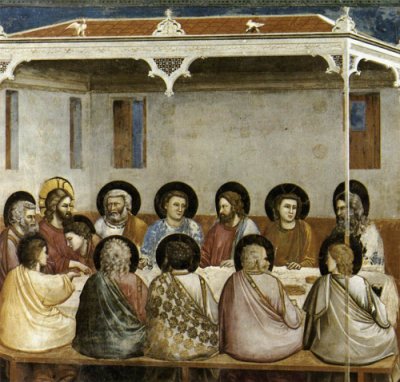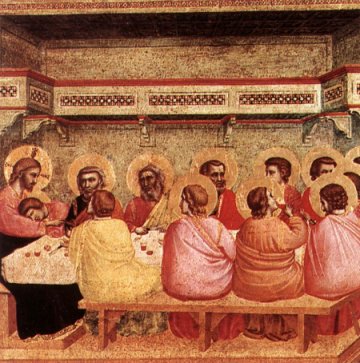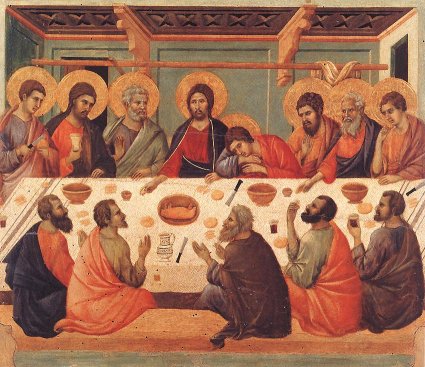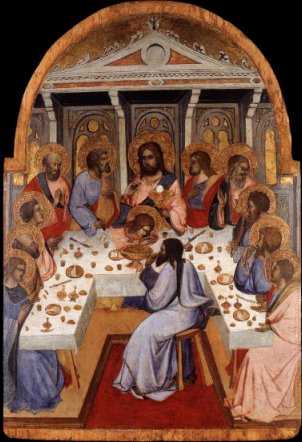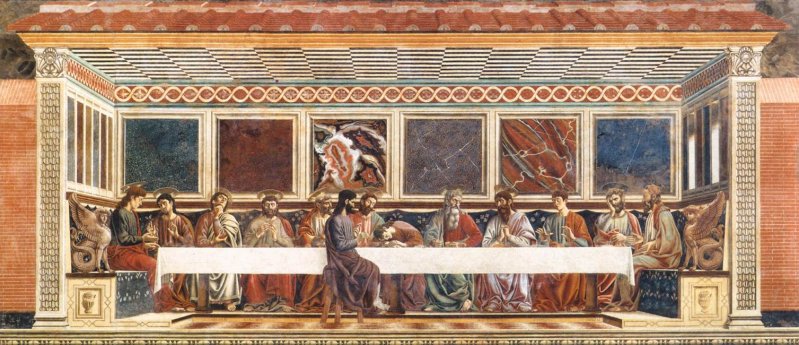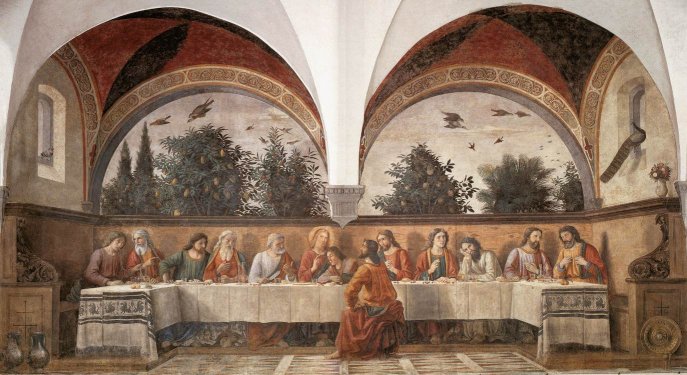|
The Passion of Christ |
|
|
The Last Supper - page 3 |
|
|
Painting the Last
Supper before Leonardo The image below left, by an unknown painter, comes from the abbey of Sant Angelo in Formis, which is not far from Naples. It is dated to around 1080. To my eyes the extraordinary thing about it is how close it is in structure to the mosaic in Sant'Apollinaire Nuovo in Ravenna, and there's a reminder of that on the left. This painting continues the Byzantine manner of Ravenna, albeit five hundred years later, and is painted by Greek artists with Italian assistants. |
|
|
|
|
| All changed in art with Giotto, especially after he painted his frescoes in the Arena chapel in Padua. His last supper there has suffered a little over time - the haloes, apart from that of Jesus, have turned black. A later painting attributed to Giotto, this time tempera on panel, helps with identification of Judas - no halo. ' And he answered and said unto them, It is one of the twelve, that dippeth with me in the dish.' (Mark Ch14 v 12) | |
|
|
|
| Some post-Giotto images: | |
|
|
|
|
|
|
|
|
|
|
A quality shared by all of these works is stillness; the disciples were not jumping around in dismay. This stillness continued into the next century, in the wonderful frescos in the refectories of the various monasteries in Florence. Which to choose? Not easy! |
|
|
|
|
|
|
|
|
Stillness and calm? A few years later, Leonardo was going to change all that. |
|
